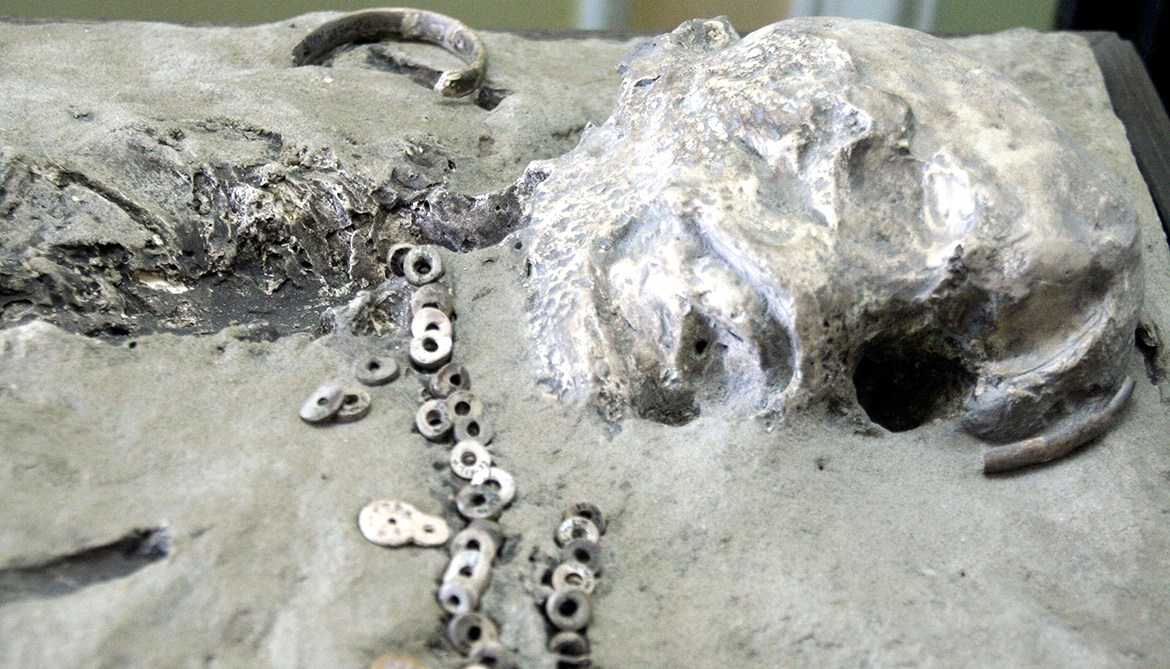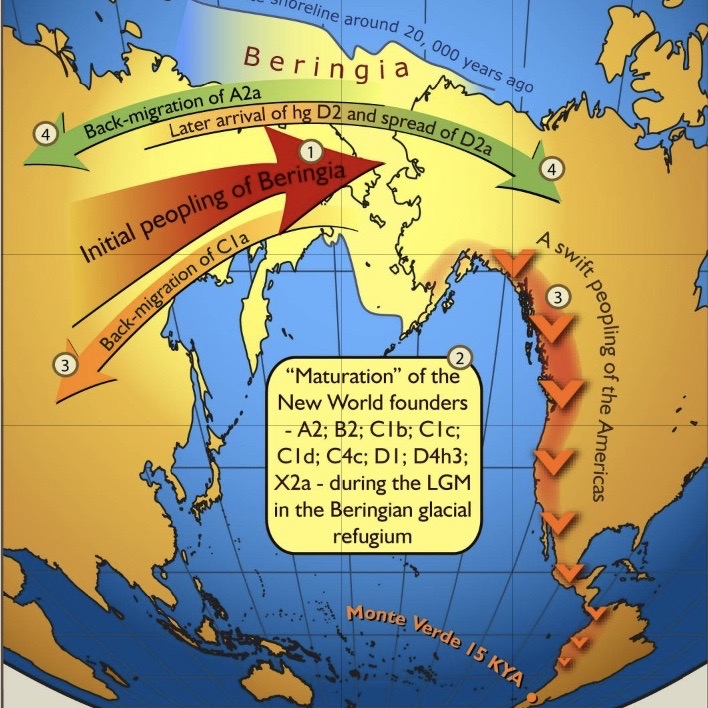 Bones of boy found in Siberia showing links to Native American Indians. Credit: Hermitage Museum, St. Petersburg, Russia
Bones of boy found in Siberia showing links to Native American Indians. Credit: Hermitage Museum, St. Petersburg, RussiaNative American Indians migrated across the Bering Strait to and from Eurasia, according to past and present scientific studies. Yet new research has not only revealed traces of their DNA in the remains of Siberians living thousands of years ago. It has also been proven that the first North Americans were in contact with them long before Europeans. This is according to a recent report published in Current Biology on January 12th.
Cosimo Posth, co-author of the report, stated that the discovery was not surprising. “Human movement is rarely unidirectional,” Posth said. “There is usually some back and forth.”
Native Americans traveled across the Bering Strait and back
New studies of DNA are revealing a myriad of information about human migration patterns. What the latest genetic mapping of the migration patterns of the first people to cross the Bering Strait in the report shows is that America’s first ancestors intermingled with the local people in Siberia.
Posth, an expert in archaeogenetics from the University of Tübingen, Germany, examined the genomes of ten people from three regions: the Altai Mountains in Siberia, the Kamchatka Peninsula, and Russia’s Far East region. It was the area’s frigid climate that helped to preserve DNA for thousands of years, Posth explained.
 Map of gene flow in and out of Beringia, according to human mitochondrial DNA haplogroups. Colors of the arrows correspond to approximate timing of the events. The initial peopling of Beringia (the region in light yellow) was followed by a standstill. Afterwards, the ancestors of the Native Americans spread swiftly all over the New World and other Beringian maternal lineages (C1a) westwards. More recent genetic exchange (in green) highlights back-migration of A2a into Siberia. It also shows the spread of D2a into northeastern America that post-dated the initial peopling of the New World. Credit: Erika Tamm et al, CC-BY-4-0 / Library of Public Science / Wikimedia Commons
Map of gene flow in and out of Beringia, according to human mitochondrial DNA haplogroups. Colors of the arrows correspond to approximate timing of the events. The initial peopling of Beringia (the region in light yellow) was followed by a standstill. Afterwards, the ancestors of the Native Americans spread swiftly all over the New World and other Beringian maternal lineages (C1a) westwards. More recent genetic exchange (in green) highlights back-migration of A2a into Siberia. It also shows the spread of D2a into northeastern America that post-dated the initial peopling of the New World. Credit: Erika Tamm et al, CC-BY-4-0 / Library of Public Science / Wikimedia Commons“In these environments, you can find individuals with 70 to 80 percent of human DNA in their bones, comparable to what you’d get if you extracted saliva from you or me,” he stated.
“You can actually generate a genome of the same quality as a modern genome. It’s amazing stuff,” he added. The oldest remains date back to around 7,500 years ago.
Significant scientific findings
Like previous DNA research, the findings published in the scientific report are not only revealing but also highly significant in regards to a better understanding of ancient human’s migration patterns.
For example, the fact that a formerly unknown group of humans lived in the Altai Mountains proves that there was migration from the Asian mainland to the archipelago on which the Jomons of Japan lived. This also provides evidence that Native Americans returned to Asia numerous times throughout many thousands of years.
The scale of the migrational movement was unexpected. “I expected movement maybe from one valley to another,” Posth said, but “here we’re talking about large-scale movement and mobility among these groups across vast areas of North America.”
In 2010, another scientific expedition discovered proof of the Denisovans, another new species. In 2018, after DNA analysis, the bones of a 13-year old girl confirmed intermixing of the group with Neanderthals. The latest genome study conducted by Posth and his team further confirms such interbreeding.
“This seems to be a crucial region for us, for humans,” the archaeogeneticist emphasized. “It might be that this was a corridor and crossroads for populations to mix.”

 1 year ago
119
1 year ago
119











 English (US)
English (US)